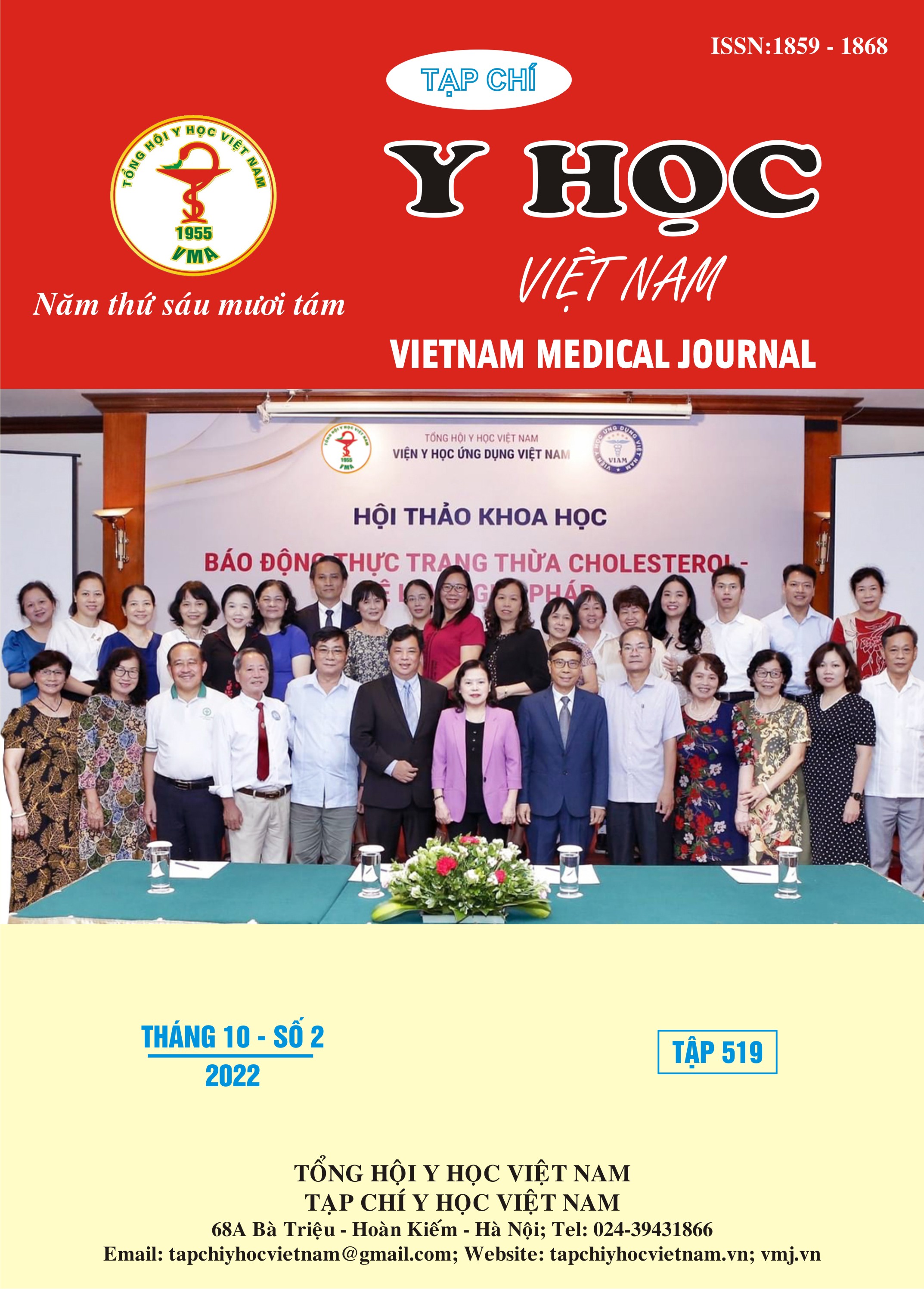DEPRESSION AND SOME RELATED FACTORS IN OLDER PATIENTS WITH OSTEOPOROSIS AT NATIONAL GERIATRIC HOSPITAL
Main Article Content
Abstract
Objectives: To determine the rate of depression and some related factors in older patients with osteoporosis at National Geriatric Hospital. Methods: A cross-sectional study was conducted during 07/2021–08/2022 with 150 older patients with osteoporosis at National Geriatric Hospital. The PHQ-9 scale was used to measure depressive symptoms. Face-to-face interviewing was conducted using a structured questionaire. Results: The depression prevalence was 62.2%, with a cut-off score ≥5 on PHQ-9 scale. Depression of the patients osteoporosis in older patients with osteoporosis was associated with education levels of less than high school (OR=2.09, 95% CI=1.04 – 4.22), impaired activity daily living (OR=2.13, 95% CI=1.03–4.38), impaired instrumental activity daily living (OR=2.28 95% CI=1.16 – 4.46). Conclusion: The prevalence of depression in older patients with osteoporosis was high. Education levels of less than high school, impaired activity daily living, impaired instrumental activity daily living were associated the main with depression among older patients with osteoporosis.
Article Details
Keywords
Depression, PHQ-9, Osteoporosis, National Geriatric Hospital, oler people
References
2. Adami S., Maugeri D., Toscano V. và cộng sự. (2011). Baseline characteristics of the population enrolled in the Italian Observational Study on Severe Osteoporosis (ISSO). Clin Exp Rheumatol, 29(3), 477–484.
3. Wu Q., Magnus J.H., Liu J. và cộng sự. (2009). Depression and low bone mineral density: a meta-analysis of epidemiologic studies. Osteoporos Int J Establ Result Coop Eur Found Osteoporos Natl Osteoporos Found USA, 20(8), 1309–1320.
4. M.T. Yasamy, T. Dua, M. Harper, S. Saxena (2013), Mental health of older adults, addressing a growing concern, .
5. World Health Organization (1994), Assessment of fracture risk and its application to screening for postmenopausal osteoporosis : report of a WHO study group, World Health Organization.
6. Drosselmeyer J., Rapp M.A., Hadji P. và cộng sự. (2016). Depression risk in female patients with osteoporosis in primary care practices in Germany. Osteoporos Int J Establ Result Coop Eur Found Osteoporos Natl Osteoporos Found USA, 27(9), 2739–2744.
7. Bahouq H. và Soulaymani A. (2020). Depression, Quality of Life, and Self-Esteem of Moroccan Postmenopausal Women with Osteoporosis before the Occurrence of Fractures. J Menopausal Med, 26(2), 121–129.
8. Weng S.-F., Hsu H.-R., Weng Y.-L. và cộng sự. (2020). Health-Related Quality of Life and Medical Resource Use in Patients with Osteoporosis and Depression: A Cross-Sectional Analysis from the National Health and Nutrition Examination Survey. Int J Environ Res Public Health, 17(3), 1124.
9. Bener A., Saleh N.M., và Bhugra D. (2016). Depressive symptoms and bone mineral density in menopause and postmenopausal women: A still increasing and neglected problem. J Fam Med Prim Care, 5(1), 143–149.
10. Oh S.M., Kim H.C., Ahn S.V. và cộng sự. (2012). Association between depression and bone mineral density in community-dwelling older men and women in Korea. Maturitas, 71(2), 142–146.


